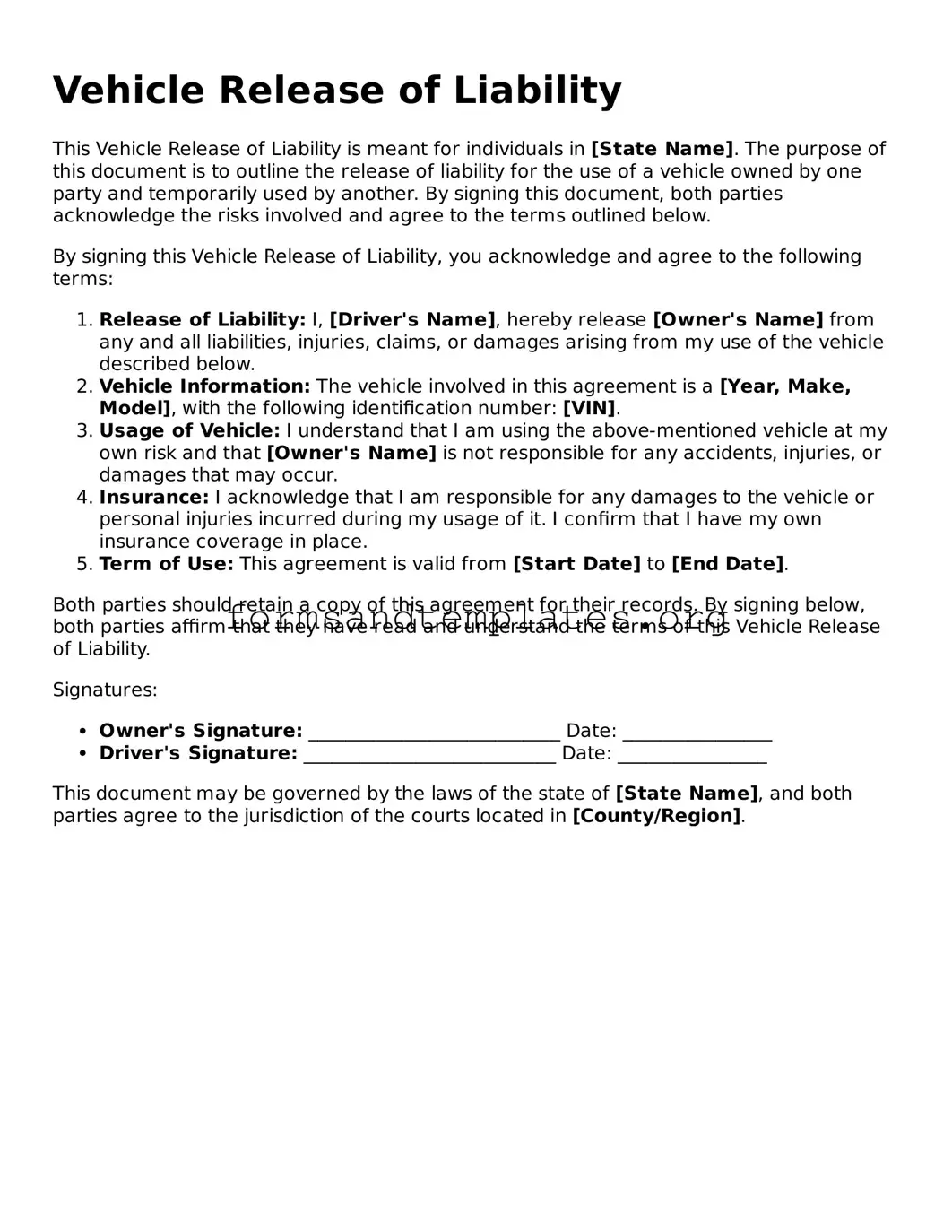Vehicle Release of Liability
This Vehicle Release of Liability is meant for individuals in [State Name]. The purpose of this document is to outline the release of liability for the use of a vehicle owned by one party and temporarily used by another. By signing this document, both parties acknowledge the risks involved and agree to the terms outlined below.
By signing this Vehicle Release of Liability, you acknowledge and agree to the following terms:
- Release of Liability: I, [Driver's Name], hereby release [Owner's Name] from any and all liabilities, injuries, claims, or damages arising from my use of the vehicle described below.
- Vehicle Information: The vehicle involved in this agreement is a [Year, Make, Model], with the following identification number: [VIN].
- Usage of Vehicle: I understand that I am using the above-mentioned vehicle at my own risk and that [Owner's Name] is not responsible for any accidents, injuries, or damages that may occur.
- Insurance: I acknowledge that I am responsible for any damages to the vehicle or personal injuries incurred during my usage of it. I confirm that I have my own insurance coverage in place.
- Term of Use: This agreement is valid from [Start Date] to [End Date].
Both parties should retain a copy of this agreement for their records. By signing below, both parties affirm that they have read and understand the terms of this Vehicle Release of Liability.
Signatures:
- Owner's Signature: ___________________________ Date: ________________
- Driver's Signature: ___________________________ Date: ________________
This document may be governed by the laws of the state of [State Name], and both parties agree to the jurisdiction of the courts located in [County/Region].
